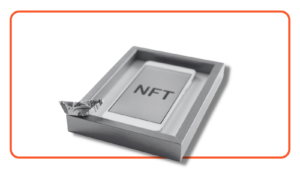The startup ecosystem in the country is booming at the moment. Every other day, there is news about a startup raising investment. You hear terms such as seed funding, Series A funding, and so on.
If you’re confused or unsure about what these funding rounds mean, then this explainer is for you.
First, let’s talk about what a startup funding round is.
Startups are high-risk and high-reward. Startups can’t show historical performance and can’t afford to put up risk collateral, so banks don’t give them loans.
Startups typically need money every few months until they figure out the product-market fit.
So they have to raise money from investors with a high-risk appetite, not expecting a return anytime soon.
These rounds are known as funding or venture rounds.
In the initial stages, the startup is funded by family and friends. Later, venture capitalists come in. They can be either angel investors or venture capital firms.
Angel investors invest their own money. Venture capitalists, on the other hand, invest other people’s money. A VC firm creates a fund, pools money from multiple people (limited partners or LPs), and invests on their behalf.
Funding rounds are divided into pre-seed, seed, Series A, Series B, Series C, etc. These rounds are raised at different stages of a startup’s journey.
Pre-seed
This is the first stage of financing for a startup. This stage comes very early in the startup’s journey but is not as common. Most startups skip this stage and go directly to seed.
At pre-seed, the startup is just getting started. It might have built an MVP and maybe launched a beta. It’s also very likely that the startup has identified a significant market opportunity and is testing its hypothesis or conducting research.
A pre-seed round is typically funded by the startup’s founders, family, or friends and is intended to help a startup get off the ground. And startups typically seek investment capital of $150,000 to $500,000.
However, startups have been raising considerable amounts in pre-seed rounds in Pakistan. Zarya, a B2B social e-commerce platform, and Maqsad, an edtech startup, raised $1.7 million and $2.1 million, respectively.
Seed
A seed round is the next natural step for a growing startup that has just taken off. At this stage, startups have an MVP and some traction. Some startups at the seed stage already have a product-market fit.
Depending on the industry and market, a startup raising a seed round may raise anywhere from $500,000 to $5 million. At this time, Pakistani startups find themselves raising an average of $2.5 million in seed funding.
PostEx, a fintech startup disrupting cash-on-delivery payments, raised $7.1 million in seed funding last month. Udhaar, a bookkeeping startup, raised $6.6 million in its seed round in 2021.
Seed-stage startups structure investments as convertible notes or SAFEs (Simple Agreements for Future Equity), popularized by Y Combinator. This allows startups to raise modest amounts from family and friends or angel investors while deferring deciding on valuation. When the startup raises its first round of funding, such as Series A, it will convert the SAFE into equity, presumably once it has actual metrics to determine a fair valuation.
Seed funding rounds are risky as the company has not yet been tested in the market. Most startups fail at this stage and don’t make it to the next round – Series A.
Series A
At this stage, the startup has actual data to show for the money invested earlier and has an established user base and revenue coming in.
Funding at this stage is used to optimize the product further and scale it for different markets. However, many companies do not make it to Series A funding as not every startup manages to make a mark in the market.
Investments here usually come from venture capital firms and range anywhere between $5 to $30 million.
Recent examples of Series A rounds include Bazaar raising $30 million and Bookme.pk raising $7.5 million in 2021.
Series B
Series B rounds are all about sustaining the growth and taking it to the next level. Startups that have completed the previous rounds are now fully established with a user base and are ready to expand their market reach.
Investments at this stage can be anywhere around $30 million or more. Series B draws investments from investors of earlier stages and can have new venture capital firms and corporate investors.
Last year, Airlift raised $85 million in its series B round and was valued at $275 million. Also, it’s common to hear valuations at this point in a startup’s journey.
Series C
Startups that have made it this far now want more funds to expand their reach into new markets, create new products, or acquire other companies.
That means raising Series C, usually the third or fourth round of financing for a startup. It is also the most expensive (for investors) and brings the most money.
The main reason why Series C’s are so expensive is that they usually come from venture capitalists and angel investors who have more money than Series A or B investors.
This round is typically institutional investors like pension funds, sovereign wealth funds, and other large-scale financial institutions. Investments at this stage can be anywhere around $60 million or more.
Zameen and Rozee are the only two startups in Pakistan that have made it to Series C.
Startups can end funding rounds at this stage or move to Series D and even Series E funding rounds. If they decide not to raise any more money, they usually IPO.
Initial public offering – IPO
Many startups use Series C funding to increase their valuation for an IPO, which is the process of opening a private company’s shares to the public.
Going public is considered a sign of success for the startup.
This allows the initial investors such as family, friends, angels, and VCs to sell their startup ownership to retail and corporate investors.
As of right now, there’s no Pakistani startup that has gone public on the Pakistan Stock Exchange.
To sum it up…
A startup founder has to go through funding rounds before creating a successful company.
The first round is known as the pre-seed or seed round. The startup will continue raising money and participating in successive funding rounds if the product is successful enough. These funding rounds are series A, B, or C, etc.







